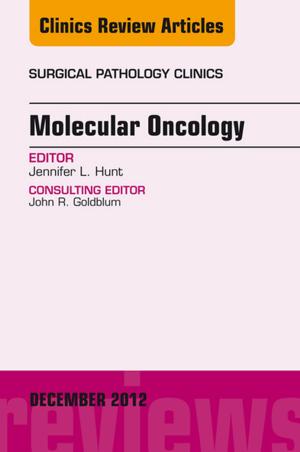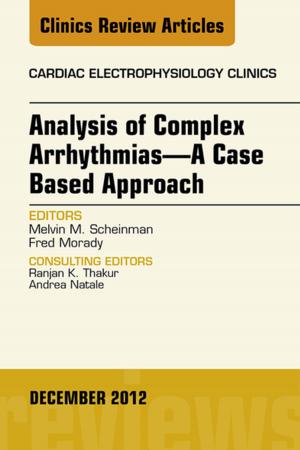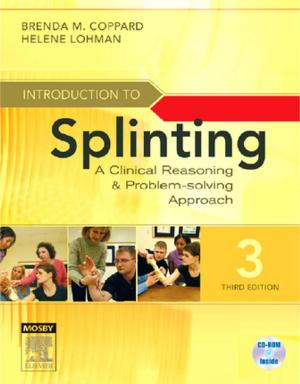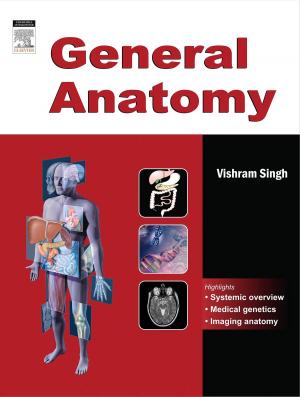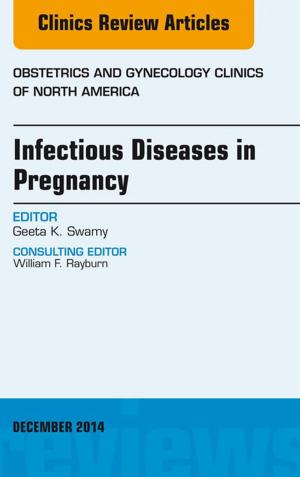Upper Gastrointestinal Bleeding, An issue of Gastroenterology Clinics of North America, E-Book
Nonfiction, Health & Well Being, Medical, Specialties, Internal Medicine, Hematology, Gastroenterology| Author: | Ian M. Gralnek, MD | ISBN: | 9780323326513 |
| Publisher: | Elsevier Health Sciences | Publication: | November 7, 2014 |
| Imprint: | Elsevier | Language: | English |
| Author: | Ian M. Gralnek, MD |
| ISBN: | 9780323326513 |
| Publisher: | Elsevier Health Sciences |
| Publication: | November 7, 2014 |
| Imprint: | Elsevier |
| Language: | English |
This issue of Gastroenterology Clinics of North America is all about acute upper GI bleeding and is divided into two distinct sections: section I is devoted to nonvariceal upper GI bleeding and section II is devoted to variceal upper GI bleeding.
Acute nonvariceal upper GI bleeding may originate from the esophagus, stomach, or duodenum, essentially anywhere proximal to the Ligament of Treitz. In Section I, Dr Gianluca Rotondano, Hospital Maresca, Torre del Greco, Italy, begins with a review of the epidemiology and diagnosis of acute nonvariceal upper GI bleeding. We then turn to patient presentation, risk stratification, and how to initially medically manage these bleeding patients. I am pleased to have one of our emergency medicine colleagues, Dr Andrew Meltzer, Department of Emergency Medicine, George Washington University, contribute this important article and provide a unique viewpoint from the emergency department where most of these patients initially present. As we all know, endoscopic hemostasis is the accepted standard of care for patients with acute nonvariceal upper GI bleeding. Moreover, peptic ulcer bleeding is the most common nonvariceal cause of acute upper GI bleeding; thus, Drs Yidan Lu, Yen-I Chen, and Alan Barkun from McGill University, Montreal, Canada, provide an in-depth review of the endoscopic management of peptic ulcer bleeding. Drs Eric Tjwa, I. Lisanne Holster, and Ernst Kuipers from the Erasmus Medical Center University Hospital, Rotterdam, The Netherlands, review the endoscopic management of all other causes of acute nonvariceal upper GI bleeding, and in addition, Drs Louis Wong Kee Song and Michael Levy from the Mayo Clinic, Rochester, Minnesota discuss emerging endoscopic hemostasis treatments, such as topical sprays and over-the-scope clipping devices. Although endoscopic hemostasis is very highly effective, there are unfortunately cases where bleeding is unable to be controlled or when significant rebleeding occurs that is not amenable to endoscopic therapy. Therefore, I have included two articles that provide insight into the question…what if endoscopic hemostasis fails? The first article, written by Drs Philip Wai Yan Chiu and James Yun Wong Lau, from Prince of Wales Hospital, The Chinese University of Hong Kong, focuses on tried and true surgical treatment options. The second article, by Dr Sujal Nanavati, University of California at San Francisco, Department of Radiology and Biomedical Imaging, addresses the alternative treatment strategy of angiographic embolization, which has now emerged as the often preferred salvage treatment strategy.
This issue of Gastroenterology Clinics of North America is all about acute upper GI bleeding and is divided into two distinct sections: section I is devoted to nonvariceal upper GI bleeding and section II is devoted to variceal upper GI bleeding.
Acute nonvariceal upper GI bleeding may originate from the esophagus, stomach, or duodenum, essentially anywhere proximal to the Ligament of Treitz. In Section I, Dr Gianluca Rotondano, Hospital Maresca, Torre del Greco, Italy, begins with a review of the epidemiology and diagnosis of acute nonvariceal upper GI bleeding. We then turn to patient presentation, risk stratification, and how to initially medically manage these bleeding patients. I am pleased to have one of our emergency medicine colleagues, Dr Andrew Meltzer, Department of Emergency Medicine, George Washington University, contribute this important article and provide a unique viewpoint from the emergency department where most of these patients initially present. As we all know, endoscopic hemostasis is the accepted standard of care for patients with acute nonvariceal upper GI bleeding. Moreover, peptic ulcer bleeding is the most common nonvariceal cause of acute upper GI bleeding; thus, Drs Yidan Lu, Yen-I Chen, and Alan Barkun from McGill University, Montreal, Canada, provide an in-depth review of the endoscopic management of peptic ulcer bleeding. Drs Eric Tjwa, I. Lisanne Holster, and Ernst Kuipers from the Erasmus Medical Center University Hospital, Rotterdam, The Netherlands, review the endoscopic management of all other causes of acute nonvariceal upper GI bleeding, and in addition, Drs Louis Wong Kee Song and Michael Levy from the Mayo Clinic, Rochester, Minnesota discuss emerging endoscopic hemostasis treatments, such as topical sprays and over-the-scope clipping devices. Although endoscopic hemostasis is very highly effective, there are unfortunately cases where bleeding is unable to be controlled or when significant rebleeding occurs that is not amenable to endoscopic therapy. Therefore, I have included two articles that provide insight into the question…what if endoscopic hemostasis fails? The first article, written by Drs Philip Wai Yan Chiu and James Yun Wong Lau, from Prince of Wales Hospital, The Chinese University of Hong Kong, focuses on tried and true surgical treatment options. The second article, by Dr Sujal Nanavati, University of California at San Francisco, Department of Radiology and Biomedical Imaging, addresses the alternative treatment strategy of angiographic embolization, which has now emerged as the often preferred salvage treatment strategy.


